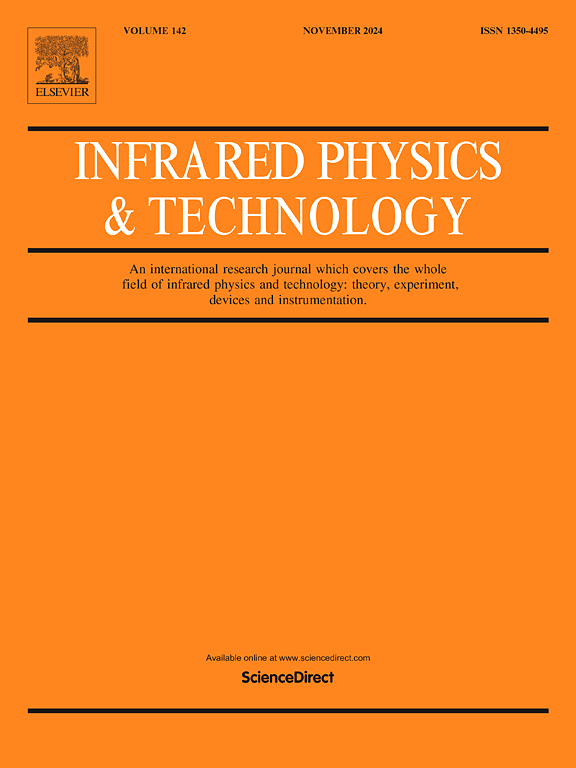近红外光谱结合二维相关光谱(2DCOS)分析鉴别茶油掺假
IF 3.1
3区 物理与天体物理
Q2 INSTRUMENTS & INSTRUMENTATION
引用次数: 0
摘要
山茶油是一种独特的食用植物油,原产于中国,具有独特的营养价值,但由于其利润高,经常与廉价油掺假。因此,检测这些掺假物的种类和浓度至关重要。本研究提出了近红外(NIR)光谱结合二维相关光谱(2DCOS)分析方法,揭示了CAO中掺假物的相互作用机理,同时实现了CAO中掺假物的快速鉴定和定量。首先,制备了不同浓度梯度的掺假CAO样品,完成了油样的光谱表征。然后,采用2DCOS方法对不同浓度的掺假油进行高重叠谱带的区分。采用同步光谱法从自相关峰中识别特征波长,采用异步光谱法分析不同浓度梯度下掺假油中脂肪酸融合的顺序相互作用。在此基础上,以选择的特征波长为输入变量,利用支持向量机(SVM)和偏最小二乘回归(PLSR)建立了简化的多光谱模型。结果表明,所建立的多光谱模型准确度为92.78%,测定系数为0.9601 ~ 0.9940,检出限为0.70% ~ 1.84%。这些结果表明,近红外光谱结合2DCOS技术可以作为一种强大的快速检测技术用于CAO中掺假分析,并为研究掺假油组分的相互作用机理提供了新的方法。本文章由计算机程序翻译,如有差异,请以英文原文为准。
Identification of camellia oil adulteration by using near infrared spectroscopy combined with two dimensional correlation spectroscopy (2DCOS) analysis
Camellia oil (CAO), a unique edible plant oil native to China with distinct nutritional benefits, is often adulterated with cheaper oils due to its high profit. Therefore, the detection of the types and concentrations of these adulterants is crucial. In this study, the near-infrared (NIR) spectroscopy combined with two dimensional correlation spectroscopy (2DCOS) analysis method is proposed, revealing the interaction mechanism of adulterants in CAO, while enabling the rapid identification and quantification of adulteration in CAO. Firstly, Adulterated CAO samples with different concentration gradients were prepared, and the spectral characterization of the oil samples was completed. Then, the 2DCOS method was applied to distinguish highly overlapping spectral bands in adulterated oils of different concentrations. Synchronous spectra were employed to identify characteristic wavelengths from autocorrelation peaks, and asynchronous spectra were employed to analyze the sequential interaction of fatty acid fusion in adulterated oils under varying concentration gradients. Furthermore, the simplified multispectral models using support vector machine (SVM) and Partial Least Squares Regression (PLSR) were established with selected characteristic wavelengths as input variables. The established multispectral models demonstrated good performance with an accuracy of 92.78 %, the determination coefficients between 0.9601 and 0.9940, and the limits of detection between 0.70 % and 1.84 % for these adulterated oils. These results indicate that NIR spectroscopy combined with 2DCOS can be used to serve as a powerful rapid detection technique for adulteration analysis in CAO, and provides new methods for the interaction mechanism of adulterated oil components.
求助全文
通过发布文献求助,成功后即可免费获取论文全文。
去求助
来源期刊
CiteScore
5.70
自引率
12.10%
发文量
400
审稿时长
67 days
期刊介绍:
The Journal covers the entire field of infrared physics and technology: theory, experiment, application, devices and instrumentation. Infrared'' is defined as covering the near, mid and far infrared (terahertz) regions from 0.75um (750nm) to 1mm (300GHz.) Submissions in the 300GHz to 100GHz region may be accepted at the editors discretion if their content is relevant to shorter wavelengths. Submissions must be primarily concerned with and directly relevant to this spectral region.
Its core topics can be summarized as the generation, propagation and detection, of infrared radiation; the associated optics, materials and devices; and its use in all fields of science, industry, engineering and medicine.
Infrared techniques occur in many different fields, notably spectroscopy and interferometry; material characterization and processing; atmospheric physics, astronomy and space research. Scientific aspects include lasers, quantum optics, quantum electronics, image processing and semiconductor physics. Some important applications are medical diagnostics and treatment, industrial inspection and environmental monitoring.

 求助内容:
求助内容: 应助结果提醒方式:
应助结果提醒方式:


